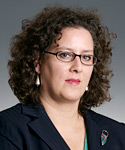Much recent scholarship on financial regulatory reform since the global financial crisis critiques the substance of new standards and rules. For this paper (the draft is dated September 2011) Kimberly Krawiec chose to examine the process which produces rules of financial regulation (this is the sausage-making of the paper’s title). The current administration, like governments of other countries, has emphasized the importance of transparency and open government and of opening up decision-making to citizen participation, so an academic study like this paper, which examines citizen participation in rule-making, is timely and important.
The paper’s case study is of the Volcker rule, which restricts proprietary trading and ownership interests in hedge funds and private equity funds by banking entities. Professor Krawiec chose to focus on the Volcker rule because it “had the potential to illuminate questions of whose voice gets heard on a major issue of financial reform as the sausage is really getting made”. The Dodd-Frank Act left significant discretion to regulators with respect to the details of this rule (and others): key terms and the contours of the exceptions to the bans are not clearly defined. Professor Krawiec explains that the exceptions were a necessary component of a compromise between those who thought that Dodd-Frank should do more to rein in large financial institutions and those who were sympathetic to complaints from financial institutions. She also points out that much of the trading the Volcker rule explicitly permits shares objective characteristics with proprietary trading, such that the motive for the trading is the distinguishing characteristic.
Thus the details of the Volcker rule are being spelled out in administrative rather than legislative processes. The Dodd-Frank Act required the Financial Stability Oversight Council to study and make recommendations on implementing the rule, and in October 2010 the FSOC invited public input to the study via the Federal Register. The invitation produced numerous responses, many of which were based on a form letter produced by a coalition of public interest groups. Professor Krawiec’s study of the letters the FSOC had not identified as form letters (but many of which were) showed that 91% of the 8000 letters sent to the FSOC were form letters. She notes that the number of comment letters suggests that the Volcker rule has some public salience, although the use of the form letter “does not require the same level of investment as the detailed, heavily researched comments submitted by financial institutions and trade groups”. (P. 21.) The comment letters written by private individuals contrast sharply with those submitted by financial institutions and trade groups. Those which were not based on the form letter were short and tended to
lack specific suggestions or recommendations for interpreting and implementing the Volcker Rule… contain many grammatical, punctuation and typographical errors, and express extreme anger at the banks and, often, at the political system as well. (P. 22.)
One result of the governmental insistence on transparency is that the federal financial regulators (including the Federal Reserve Board) have been disclosing information about their communications with the public, including meetings. Professor Krawiec studied available information about meetings between federal regulators and financial institutions, law firms, trade associations and lobbyists and public interest groups. She writes:
In sum, whereas financial industry representatives met with federal agencies on the Volcker Rule a total of 265 times, meetings with entities or groups that might reasonably be expected to act as a counterweight to industry representatives in terms of the information provided and the types of interpretations pressed… numbered only 18. This is roughly the same number of times that a single financial institution–JP Morgan Chase–met with federal agencies on Volcker Rule interpretation and implementation. (P. 27.)
Moreover, nearly all of the small number of meetings between the federal agencies and public interest and advocacy organizations were group meetings.
In the concluding section of the paper Professor Krawiec is careful not to make dramatic claims about what impact the submissions and meetings had on the development of the regulatory agencies’ thinking about how to draft regulations to implement the Volcker Rule. But the paper raises some important questions about how transparent rule-making processes really are, even in the era of open government. Proposed Prohibitions and Restrictions on Proprietary Trading and Certain Interests in, and Relationships With, Hedge Funds and Private Equity Funds (127 pages of them) were published in the Federal Register on November 7, 2011. The proposing release refers to the FSOC study and states that:
Approximately 8,000 comments were received from the public, including from members of Congress, trade associations, individual banking entities, consumer groups, and individuals. As noted in the issuing release for the Council Study, these comments were carefully considered by the Council when drafting the Council study. (P. 3.)
This brief statement gives a very different picture of the comments from the one portrayed in Professor Krawiec’s paper.








